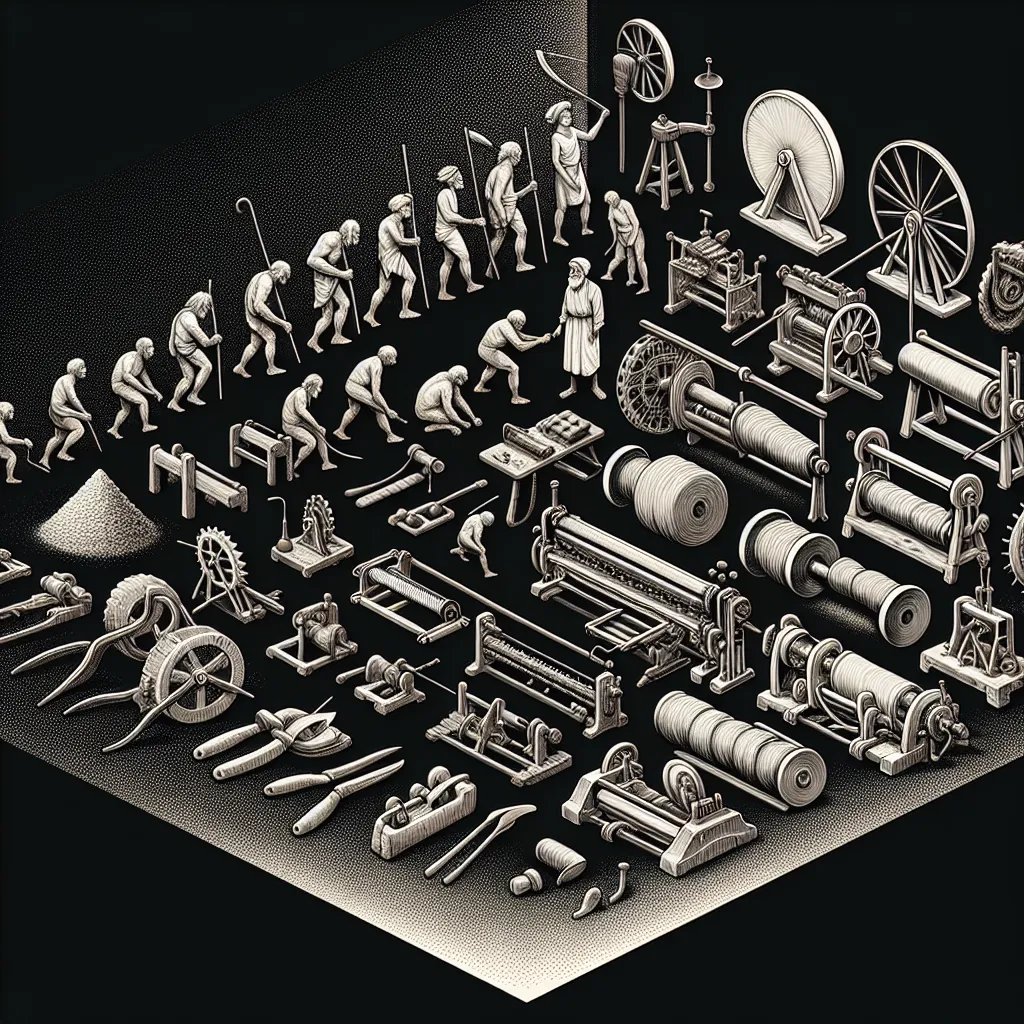
The Evolution of Rope: From Ancient Times to Modern Day
The Origins of Rope-Making in Ancient Civilizations
The origins of rope-making can be traced back to ancient civilizations, where the need for strong and versatile cordage was essential for various activities such as hunting, fishing, construction, and transportation. The first evidence of rope dates back to around 28,000 BC, where early humans used natural fibers such as vines, grasses, and animal sinew to create simple twisted cords.
In ancient Egypt, rope-making reached a more advanced stage, utilizing materials like papyrus and hemp to produce stronger and more durable ropes. The Egyptians used ropes extensively for activities such as sailing, construction of monumental structures like the pyramids, and even for medical purposes.
Similarly, ancient civilizations like the Greeks and Romans also made significant advancements in rope-making, using materials such as flax, wool, and other natural fibers to create ropes of different strengths and thickness. The use of ropes extended to various aspects of daily life, including ship rigging, construction of buildings, and military applications.
The invention of the ropewalk during the Middle Ages revolutionized the rope-making process, allowing for longer and more uniform ropes to be manufactured. This innovation paved the way for the use of ropes in maritime exploration, trade, and warfare during the Age of Discovery.
As technologies advanced, the industrial revolution saw the introduction of mechanized rope-making processes, leading to the mass production of ropes using materials like jute, manila, and synthetic fibers such as nylon and polyester.
In modern times, rope-making has evolved to include specialized ropes for specific purposes, such as climbing ropes, marine ropes, and synthetic ropes for industrial applications. The use of modern materials and manufacturing techniques has further expanded the capabilities of ropes, making them essential in a wide range of industries, including construction, sports, and aerospace.
The evolution of rope-making from ancient civilizations to the modern-day showcases the significance of this fundamental tool throughout human history, serving as a testament to the ingenuity and resourcefulness of our ancestors in creating essential technologies from natural materials.
By understanding the origins of rope-making in ancient civilizations, we can appreciate the historical significance of this essential tool and its enduring impact on human progress and development.
Keywords: rope-making, ancient civilizations, history of rope, ancient rope production, evolution of ropes
The Role of Rope in Early Maritime Exploration
The role of rope in early maritime exploration was integral to the success of ancient seafaring voyages. From the ancient Egyptians to the great explorers of the Age of Discovery, rope played a crucial role in enabling the navigation of the world’s oceans.
Ancient mariners relied on ropes made from natural fibers such as hemp and other plant materials to rig their ships, hoist sails, and secure cargo. The durability and strength of these ropes were essential for withstanding the harsh conditions of long sea voyages.
During the Age of Exploration, advancements in rope-making techniques, such as the introduction of tarred and synthetic ropes, enabled ships to venture into uncharted waters with greater confidence. These innovations provided increased tensile strength and resistance to water, making them essential tools for early navigators like Christopher Columbus and Ferdinand Magellan.
Ropes were used not only for maritime navigation but also for survival, as they were essential for tasks such as fishing, securing provisions, and even repairing the ship while at sea. In the absence of modern technology, the quality and reliability of the ropes were critical to the success and safety of these early maritime expeditions.
In conclusion, the evolution of rope from ancient times to the modern day has been closely intertwined with the history of maritime exploration. The development of stronger, more resilient ropes has been pivotal in enabling humankind to traverse the world’s oceans and discover new lands. Even in the present day, the importance of rope in maritime activities remains undiminished, demonstrating the enduring legacy of this humble yet indispensable tool.
Overall, the role of rope in early maritime exploration was indispensable, providing essential support for the navigation, survival, and success of ancient seafaring voyages.
Innovations in Rope-Making Techniques Throughout History
Throughout history, the evolution of rope-making techniques has seen remarkable innovations, revolutionizing the way ropes are produced and used. From ancient civilizations to modern-day industries, the methods of rope production have continuously advanced, resulting in more durable, versatile, and reliable ropes.
One of the earliest advancements in rope-making was the introduction of natural fibers such as hemp, flax, and cotton. These materials were twisted or braided together to create sturdy ropes used in sailing, construction, and various other applications. The innovation of spinning and weaving these fibers marked a significant leap forward in rope production, enabling the creation of stronger and more structured ropes.
The industrial revolution brought about further innovations in rope-making techniques with the advent of machinery for spinning and twisting fibers. This led to the mass production of ropes, making them more accessible and affordable for a wide range of industries. The utilization of synthetic fibers such as nylon and polyester in the mid-20th century further revolutionized the rope-making process, offering increased strength, durability, and resistance to elements.
Modern innovations in rope-making have focused on enhancing the performance and safety features of ropes. Advanced braiding and twisting methods, as well as coatings and treatments, have improved the grip, tensile strength, and weather resistance of ropes, making them indispensable in activities such as climbing, sailing, and industrial operations.
In conclusion, the history of rope-making is a story of constant innovation and improvement. From the early use of natural fibers to the modern incorporation of cutting-edge materials and techniques, the evolution of rope-making has been marked by a relentless pursuit of better performance, durability, and versatility.
Modern Applications of Rope in Industry and Adventure Sports
Rope has undergone a remarkable evolution from its ancient origins to its modern-day applications. While it originally served as a vital tool for hunting, fishing, and construction in ancient times, today it plays a crucial role in a wide range of industries and adventure sports activities. In the industrial sector, ropes are utilized for lifting heavy loads, securing cargo, and providing support in construction and mining. The development of advanced synthetic fibers has significantly enhanced the strength, durability, and flexibility of modern ropes, making them indispensable in industries such as shipping, oil and gas, and construction.
Furthermore, the versatility of rope has made it an essential component in a variety of adventure sports, including rock climbing, sailing, and mountaineering. Modern ropes are designed to withstand extreme tension and impact, providing crucial safety measures for enthusiasts participating in these exhilarating activities. Whether it’s for belaying during a rock climbing expedition or rigging a sail while sailing, the reliability of modern ropes is paramount to ensuring the safety of individuals engaging in adventure sports.
As industries continue to advance and adventure sports grow in popularity, the demand for ropes that offer enhanced strength, durability, and safety features will only continue to rise. Manufacturers are continually innovating to meet these evolving needs, developing ropes with specialized characteristics tailored to specific industrial and recreational applications. With ongoing advancements in materials and construction techniques, the future of rope in both industry and adventure sports looks set to be even more groundbreaking and indispensable.



